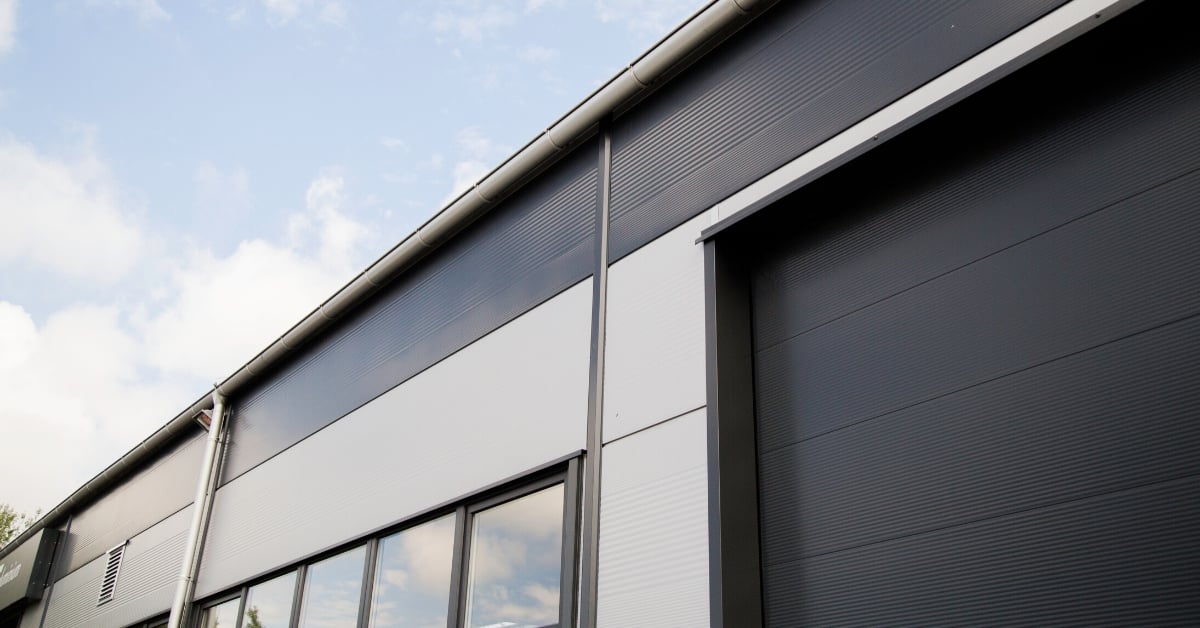Sandwich panels have many other interesting features aside from their known and appreciated insulating capacity. In fact, depending on the materials from which they are made, these building blocks can turn out to be an effective passive protection against fire.
Sandwich panels, fire-preventing performance
Sandwich panels are usually made with two metal faces and a core of insulation material. The integral coupling of the steel coating with the internal layer makes it possible to form a unique element and makes for a product that behaves well in a fire. Depending on the material chosen for the core, the panel can have additional improved fire-prevention performances.
The dry construction technique has the advantage of being able to modulate the components based on the needs of the individual design. Therefore, depending on the intended use of the building, sandwich panels with a fire resistance class may be more appropriate, or those with at least a reaction to fire class, i.e. the class that indicates the building’s flammability class.
The modularity of constructions for assembly makes it possible to use the panels either in the outside walls or for roofing and internal dividers, guaranteeing the uniform performance of the entire building envelope and the walls. Regardless of the objective identified, it is possible to achieve it with sandwich panels: from thermal insulation to soundproofing, from resistance to stability, from waterproofing to fire control.
Thanks to their special technical features provided by the materials that compose them, the panels can in fact help protect buildings by preventing fires from developing and limiting their size.
Sandwich panels in non-combustible rock wool
Rock wool is one of the best-performing materials in terms of fire resistance. It is not a coincidence that it constitutes one of the first choices when it comes to manufacturing insulated panels, that also act as passive protection from fires.
In fact, mineral wool is characterised by a low thermal transmittance value and thus provides excellent insulation; however, the feature that most sets it apart from other highly insulating materials is precisely its natural non-combustibility.
Rock is not flammable and, in the case of fire, does not take part in spreading the fire. It is a flame retardant and has a neutral chemical impact. This is why rock wool insulation is used in fire protection systems.
This type of panel is a high-performing and cost-effective solution. Its use is also incentivised by the simplified laying.
Rock wool, class A
The rock wool core is the element that most affects the behaviour of the entire sandwich panel in case of fire. Thanks to the protection offered by the galvanised and pre-painted steel panels, it also guarantees good resistance, essential in case of fire.
The performance can be improved by the orthogonal arrangement of the mineral fibres compared to the panel’s directional layer. In this case, we speak of rock wool with oriented fibres.
The insulated rock wool panels, tested for their reaction to fire in accordance with the standard EN 13501-1, obtain classification A2 S1 D0. The classes, identified with the names A1 and A2, represent the non-combustible materials or the materials that do not significantly contribute to the development of the fire, respectively.
Fire behaviour of sandwich panels made of PIR
Various parameters influence the fire behaviour of sandwich panels with insulation in closed cell expanded polyurethane.
In the manufacture of insulating elements for construction, polyurethane is always covered by a coating which helps determine the performance of the entire panel. In addition, the very formulation of the foam influences its performance. There are, in fact, flame retardants that improve the efficiency of PIR.
In case of combustion, as it is a thermosetting material, the rigid expanded polyurethane carbonises. The area directly exposed to the flames in invested by a protective carbonaceous structure, char, which helps slow down the fire, limiting the degradation of the underlying layers.
PIR, class B
The PIR core of the sandwich panels protects buildings from fire. In fact and in accordance with the standard EN13501, polyurethane with suitable flame retardant compounds is characterised by good fire behaviour: it does not melt during combustion and does not release flaming drops or particles.
In addition, panels in PIR are available on the market which have obtained the classification Euroclas B S1 D0, which identifies non-flammable or hardly flammable combustible materials, with low emission of fumes in case of fire.


